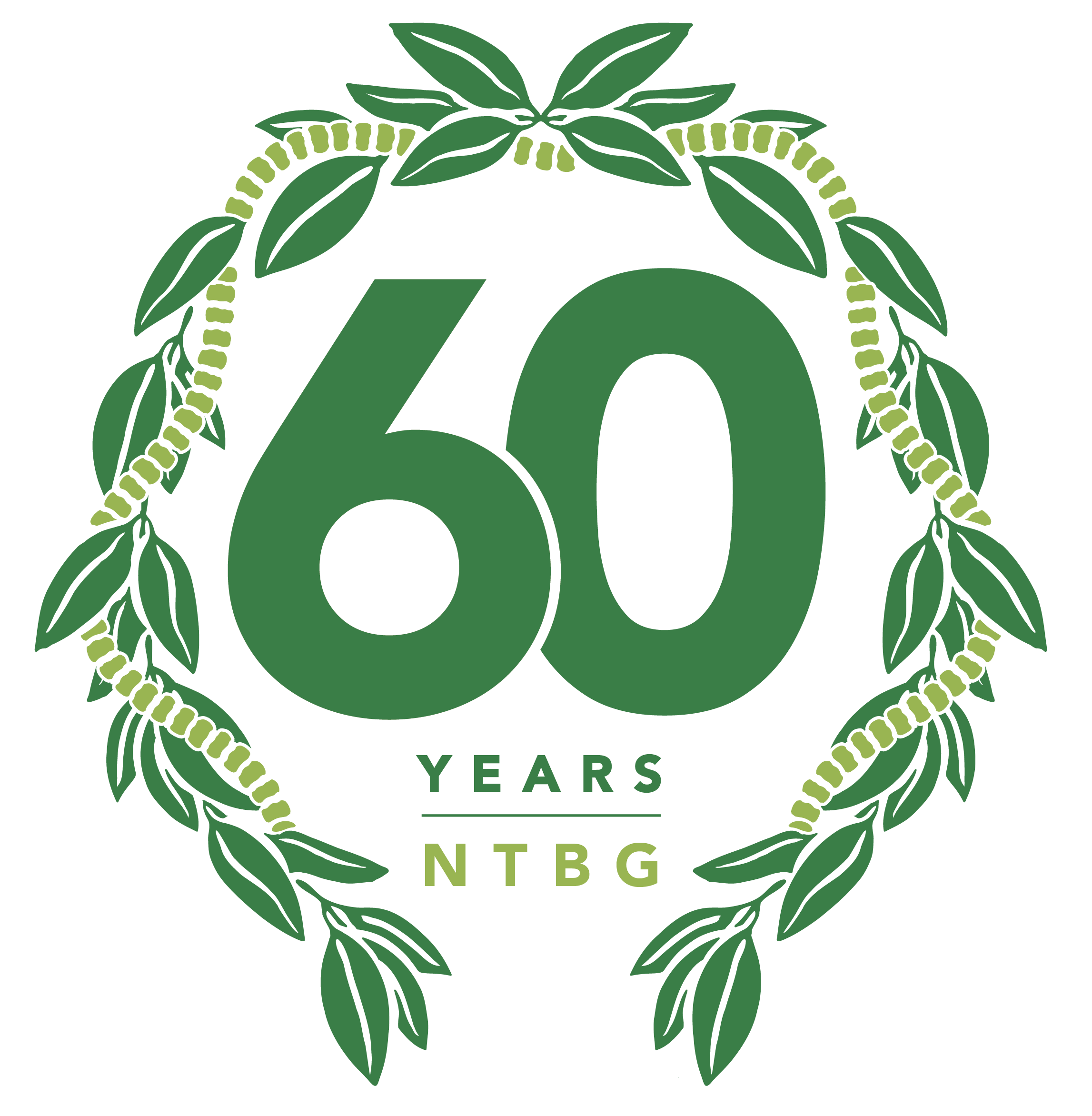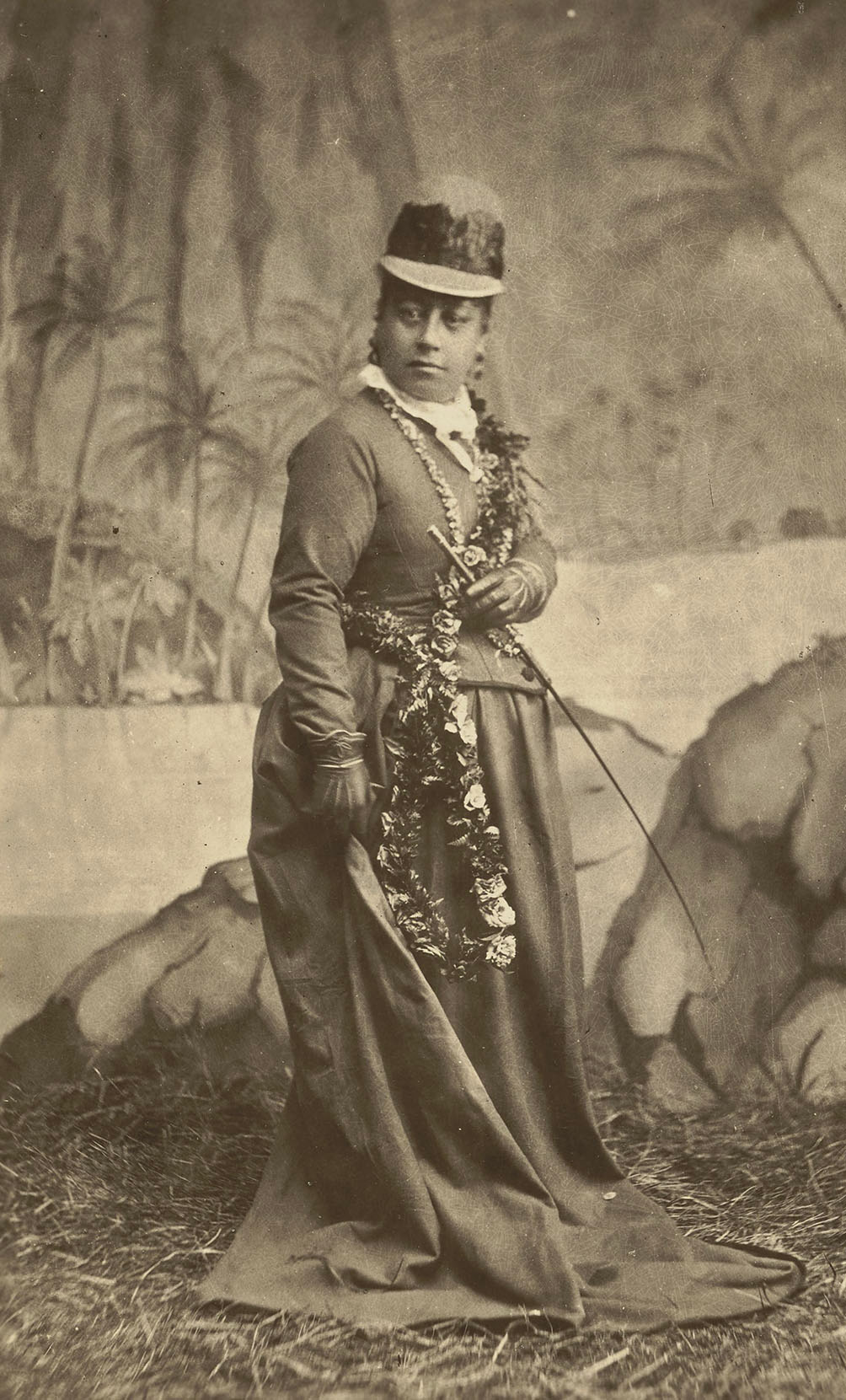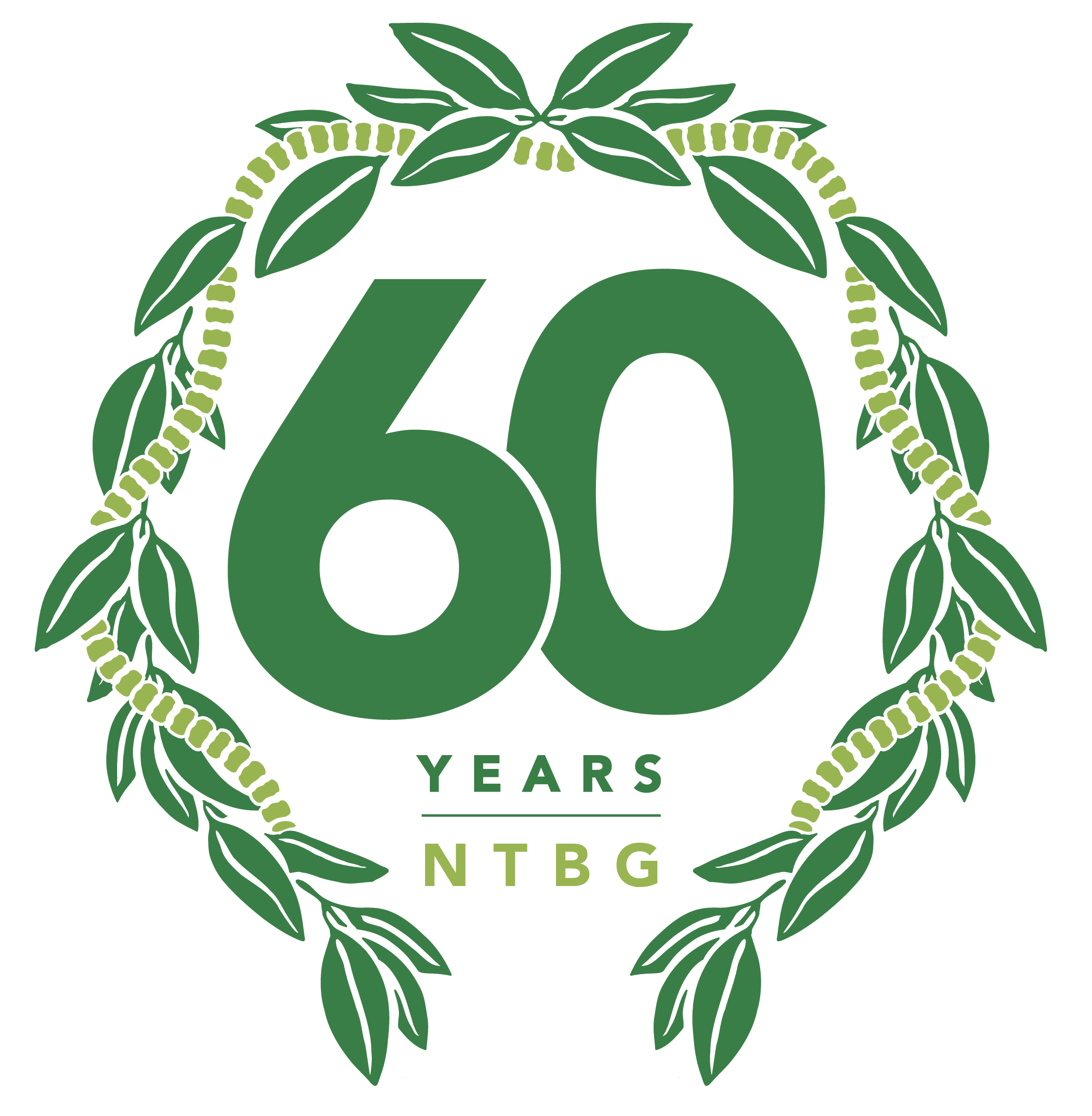
2024 marks the 60th anniversary of the National Tropical Botanical Garden. Every month we will weave a lei for you, one that brings together plants and stories from our five botanic gardens. These lei will be made by NTBG staff and community members. We will spotlight these amazing creators alongside their lei. Our first lei, created by Mahea Hoʻokano, is an homage to Queen Emma in the month of her birthday, January 2.


A photo of Queen Emma in her riding habit, adorned with lei. Sourced from the Hawaiʻi State Archives.
This exquisite lei recounts the journey that Queen Emma made from her Lāwaʻi cottage to the forested uplands of Kōkeʻe on Kauaʻi in 1871. Queen Emma, queen consort of King Kamehameha IV, is a revered figure who after the passing of her husband and son in the 1860s found refuge in Lāwaʻi Valley, now home to McBryde Garden and Allerton Garden. Her adventure to Kōkeʻe is celebrated in moʻolelo (stories), mele (songs), and now lei. Mahea Hoʻokano has masterfully woven plants found along this route, from mauka to makai. Beginning at the bottom of the lei are plants of Lāwaʻi beach, including native pōhinahina and magenta bougainvillea that the queen herself purportedly planted. Graduating up the lei are plants like lauaʻe fern, moa, and koa, reflecting the ascent into Kauaʻi’s enchanting forests.

Just $25 powers a year of impact for plants and people no matter where you live. You’ll also receive The Bulletin magazine and invitations to special member events.
Join usQueen Emma’s great love of plants is reflected in this lei, strung with both those she brought to Lāwaʻi and heralded on her Kōkeʻe trip. At Allerton Garden, we continue to tend her beloved plants and her plant passion. Read on below for an interview with Mahea about her process and perspective behind this beautiful lei.
Lei is a living art form to me; they’re declarations of love and honor to celebrate an entity, alive or passed. The intention is the upmost importance, in my opinion. Receiving a lei is a gift given with consideration for the recipient. Constructing a lei tests what you know about the plants you’ve chosen to use, creatively discovering how each compliment the other like ingredients in a recipe. Like many other art forms, lei challenge the artist’s ability, focus, patience, and determination. Every time I sit down to make lei I welcome the lessons that are most definitely on their way.
Making this lei for Queen Emalani Kalanikaumakaʻamano Kaleleonālani Na’ea Rooke allowed me to honor her journey on Kaua’i. Queen Emalani lost her 4 year old son Prince Albert, and a year later her husband, Alexander Liholiho (King Kamehameha IV). I can’t begin to understand the depth of grief she felt during that time, especially as a matriarch of a kingdom with legacy expectations. But she came to Lāwaʻi to seek solace in a cottage now located in Allerton Garden and in January of 1871 she orchestrated an expedition with 100 companions to Kilohana to amend her wounded spirit (in January!). Through “…fog chilled forests and wet swampy areas, where a mis-step might cause one to sink waist deep in mud. The party spent the night in the forest of ʻAipo-nui, at a place called Waineki, and the next day went to the end of the trail, to the Kilohana, or lookout, of Hanalei” (An excerpt from “Queen Emma of Lawai”). No boardwalks or cleared trails. So this lei tells that story: if you start at the center where the lei would hang closest to the heart, I used pōhinahina and purple bougainvillea from the Lāwaʻi-kai region, climbing elevation with ferns of laua’e, uluhe, and moa. Then closer to the shoulder of the lei we ascend up mauka with cedar, norfolk, cypress, and redwood from Kōkeʻe’s upland region as Queen Emma did on her quest.
I recognize plants as kinolau of Lokahi; avenues to understand a bigger sense of harmony. They communicate their needs a little less loudly as keiki, but the message is just as clear if you observe the signs as you would a baby that can’t speak. Plants play a bigger role than we give credit whether you apply that to vegetables that feed us and the animals we eat to the forests that regulate the planet’s oxygen exchange. They deserve much more respect than modern humans as a global collective give them. Indigenous people understood that concept, a lifestyle I wish was more focal today.
My advice would be to study or educate yourself on how the Indigenous people of an area respect that environment. Observe the region you occupy and note the plants that inhabited that environment naturally beforehand. Get involved in restoration projects and support the open areas that are preserved and the initiatives that battle further development. The space between big cities and national parks is shrinking, it’s a good time to appreciate what’s at your doorstep and give back to what you have where you stay.

Discover all of our lei legacy stories and check out upcoming events in celebration of NTBG’s 60th anniversary.